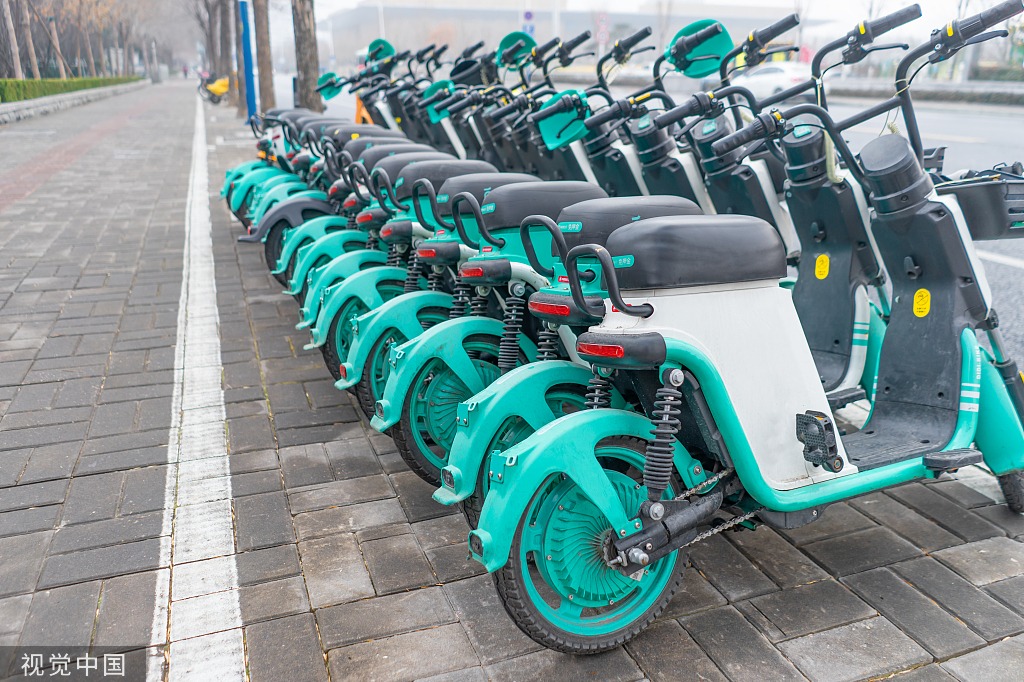China's financial sector broadens in wealthier golden years pursuit
Xinhua | Updated: 2022-11-26 10:30

BEIJING - Instead of comparing prices of desired products on different e-commerce platforms during the online shopping festival earlier this month, Ding Meng, a 34-year-old white collar worker, purchased commercial endowment insurance after careful study of a variety of choices.
By paying a monthly contribution to the insurer for 10 years, Ding would secure a pension providing a set amount each month after reaching 60. The longer she lives, the more pension she gets.
"COVID-19 has taught me the lesson that you have to save up for the rainy days," Ding said. "It's never too young to lay your nest eggs."
Ding is not alone in her preemptive move against aging.
The average age at which Chinese respondents start saving for their old age has dropped significantly -- from 38 years old in 2021 to 35 in 2022 -- according to a recent survey released by financial services provider Fidelity International and a local peer.
The awareness of resorting to financial products to ready oneself for old-age has been growing particularly fast in China this year, as the country's financial authorities and market players are making nest egg financial services for golden years more available and accessible.
China had over 200 million elderly people aged 65 and above by the end of 2021, about 14.2 percent of its population. The world's largest developing country is facing an aging society and needs abundant capital to take good care of the graying citizens.
"Developing a multi-level and multi-pillar endowment insurance system is an important measure to improve supplies in the social field," Guo Shuqing, chairman of the China Banking and Insurance Regulatory Commission (CBIRC), said Monday at this year's Financial Street Forum annual conference.
China has a three-pillar old-age insurance mechanism. By the end of last year, the government-led basic old-age insurance covered some 1.03 billion people, forming a huge national pension fund pool. The enterprise and occupational annuities, the mechanism's second pillar, covered more than 70 million employees.
The less-developed commercial old-age financial products and the private pension plan, also known as the market-oriented third pillar, have been catching up fast this year.
The country expanded a commercial endowment insurance pilot program nationwide in March, with over 250,000 people having purchased qualified products so far.
More varieties of old-age financial products are entering the market.
A pilot old-age wealth management service program started to gain more traction in March, while a specific old-age deposit pilot project kicked off last week.
To expand the capital pool for purchasing these old-age financial products, the country has introduced a private pension plan, allowing qualified citizens to open their own individual pension accounts.
The account -- which can collect up to 12,000 yuan ($1,682.11) annually and enjoys tax incentives -- is to be used specifically for buying certain old-age financial products.
"China's household deposits have exceeded 110 trillion yuan, and there is great potential for transforming social wealth into long-term pension funds," said Chen Yingdong, an official with the CBIRC.
While providing more options for wealth building and financial stability, the accelerating third-pillar old-age insurance sector is opening up a lucrative new market for banks and financial institutions.
The government's promotion of the private pension plan will bring development opportunities to market players, expanding the size of the old-age financial service market and leading to changes in investment concepts and innovation in financial instruments, said Huang Tao, general manager with domestic insurer Guomin Pension, which is among the first batch of authorized insurers to tap the private pension market.
"We are very optimistic about the scale of the capital inflow into the private pension market," said Helen Huang, managing director of Fidelity International China.
"The market might attract 5 trillion yuan to 10 trillion yuan in 10 years," Huang estimated.
























